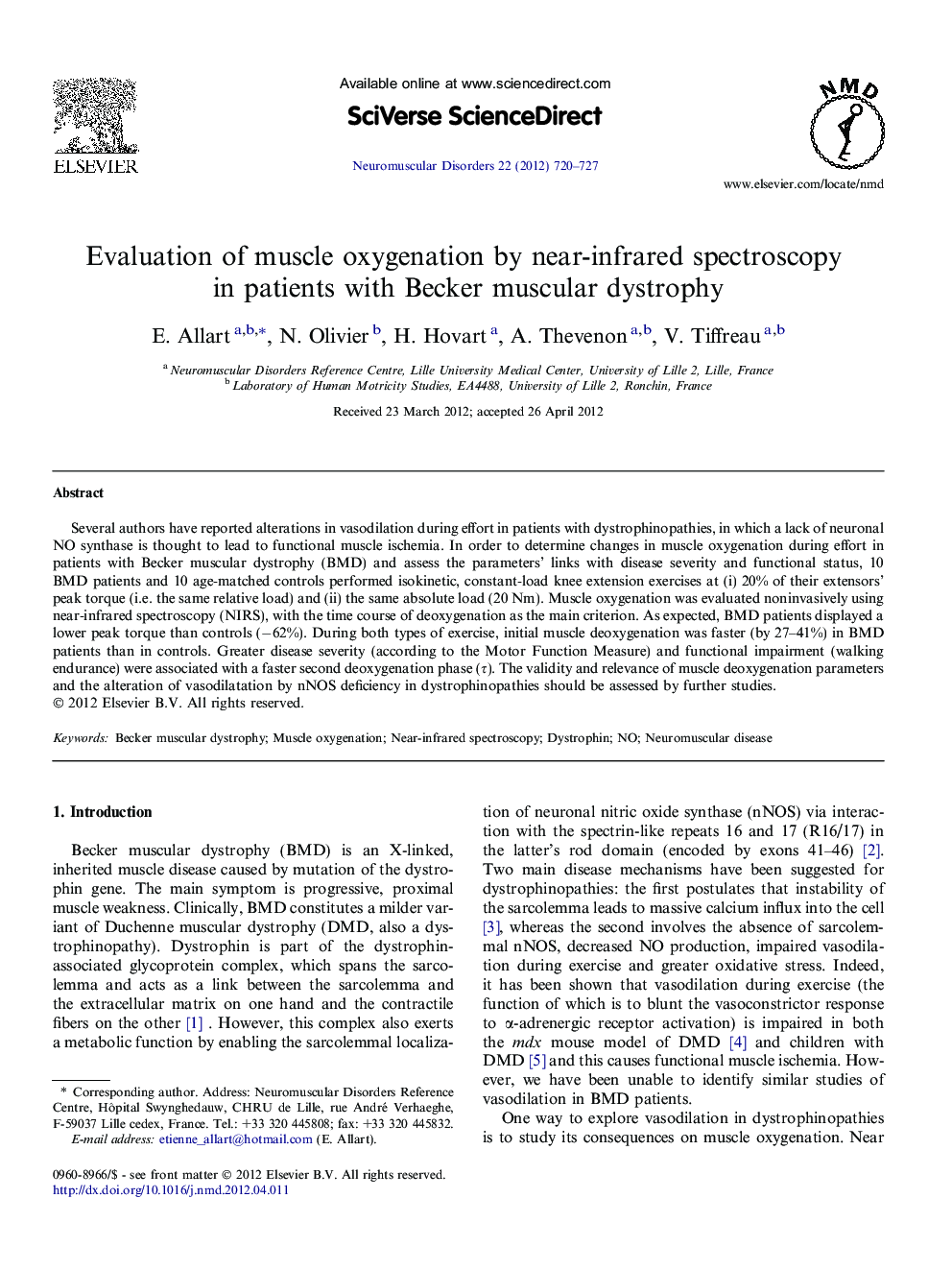| Article ID | Journal | Published Year | Pages | File Type |
|---|---|---|---|---|
| 6041770 | Neuromuscular Disorders | 2012 | 8 Pages |
Abstract
Several authors have reported alterations in vasodilation during effort in patients with dystrophinopathies, in which a lack of neuronal NO synthase is thought to lead to functional muscle ischemia. In order to determine changes in muscle oxygenation during effort in patients with Becker muscular dystrophy (BMD) and assess the parameters' links with disease severity and functional status, 10 BMD patients and 10 age-matched controls performed isokinetic, constant-load knee extension exercises at (i) 20% of their extensors' peak torque (i.e. the same relative load) and (ii) the same absolute load (20Â Nm). Muscle oxygenation was evaluated noninvasively using near-infrared spectroscopy (NIRS), with the time course of deoxygenation as the main criterion. As expected, BMD patients displayed a lower peak torque than controls (â62%). During both types of exercise, initial muscle deoxygenation was faster (by 27-41%) in BMD patients than in controls. Greater disease severity (according to the Motor Function Measure) and functional impairment (walking endurance) were associated with a faster second deoxygenation phase (Ï). The validity and relevance of muscle deoxygenation parameters and the alteration of vasodilatation by nNOS deficiency in dystrophinopathies should be assessed by further studies.
Keywords
Related Topics
Life Sciences
Neuroscience
Developmental Neuroscience
Authors
E. Allart, N. Olivier, H. Hovart, A. Thevenon, V. Tiffreau,
